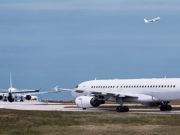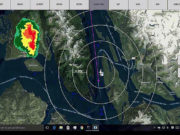The European aviation community must intensify efforts to promote cybersecurity and improve safety data collection and analysis as well as to bolster operational safety through enhanced training and technology, the European Aviation Safety Agency (EASA) says.
EASA’s European Plan for Aviation Safety (EPAS), 2019–2023, published Wednesday, advocates a “proactive approach to support the future growth of aviation while securing a high and uniform level of safety for all member states.”
The document added that such an approach will enable EASA, the European Commission and EASA member states to “take the necessary actions at the right time in order to prioritise the risks to be managed and to face the challenges posed by the increasing complexity and continued growth in civil aviation as well as to ensure safe, secure and environmental friendly implementation of new business models and new technologies.”
Noting that ensuring operational safety in commercial air transport (CAT) and in business flights in noncommercial air operations with complex motor-powered aircraft operations (NCC) is the greatest focus of EASA safety activity, the plan said new efforts must address loss of control–in flight (LOC-I) and runway excursions, incursions and collisions. Data showed that 99 serious incidents were recorded involving EASA member states in 2017; in comparison, the annual 10-year average was 79.2.
The aviation community should review and promote training for recovery from upset scenarios, and member states should address the problem at the national level and monitor the effectiveness of their efforts, the plan said.
As for runway events, recommendations included requiring on-board technology to prevent excursions, improving aircraft performance in CAT operations and implementing the European Action Plan for the Prevention of Runway Incursions (EAPPRI) and Excursions (EAPPRE). Eighty-one high-risk occurrences involving runway excursions and 28 runway collisions — a result of runway incursions — were recorded for CAT airplanes and NCC business operations from 2013–2017, the plan said.
The plan also called for a 50 percent improvement in rotorcraft safety within 10 years, with “positive and visible changes” in safety trends within five years.
To address cybersecurity, the report called for development of a cybersecurity strategy and regulatory framework. “The strategy to address cybersecurity risks should be focused on research and studies, event investigation and response, knowledge and competence building, international cooperation and harmonization, and regulatory activities and development of industry standards,” the document said.
Development of the Data4Safety program, intended to collect and analyze data to support the management of safety risks, is in progress, the plan said, adding it will require “collaborative work with the industry at a scale never done before in Europe.”



Commentary, News
Q&A with IATA SVP Safety and Flight Operations Gilberto López Meyer
Gilberto López Meyer joined the International Air Transport Association (IATA) as senior vice president of…
by FSF Editorial Staff